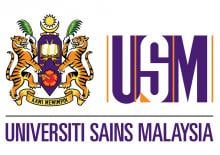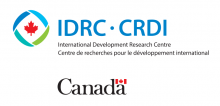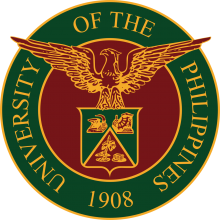Science
News

25 May 2008
Penang, Malaysia - Through the competition, many had the chance to witness a total of 145 researches by undergraduate students from 19 public and private higher learning institutions throughout the country.

25 May 2008
PENANG, 20 MAY: Realising the importance of clean water for more than 27 million people in Malaysia, two USM students successfully produced a material which is able to absorb heavy metal from industrial waste water.

25 May 2008
PENANG, 21 MAY: Raising concerns over global fuel price hikes have prompted USM students to explore fuel alternatives for vehicles.

25 May 2008
Penang, Malaysia - University Science Malaysia’s Vice-Chancellor (Research and Innovation) Prof. Muhammad Idiris Saleh, officiated the USM World Biodiversity Day and Haniff Awards on 22 May 2008.

25 May 2008
Newsworthy papers include Nanoparticles need 'stripes' for cellular success, Genetic variants affect cancer risk in alcohol drinkers, Conducting without pressure, A critical factor for maintaining blood stem cells, Understanding cocaine craving, Genetic clue to 'clubbing', Searching for cancer's 'Achilles' heel', Observing virus birth

22 May 2008
A MoU was signed between Universiti Malaysia Sarawak (UNIMAS) and Sarawak Waste Management Sdn. Bhd./Trienekens (Sarawak) Sdn. Bhd. to generate new knowledge, technologies and approaches for a sustainable management of solid wastes in Sarawak.

22 May 2008
Cancer of the nasopharynx has its highest incidence in South East Asia, and is more prevalent in the Chinese population. Past studies linked its development to genetic predisposition and herpesvirus infections. UNIMAS researchers in this on-going project have further discovered the involvement of genes not previously implicated.

21 May 2008
Summaries of newsworthy papers include Outburst marking the birth of a supernova, Molecular clues to appetite and drug addiction, Magma can directly produce earthquakes, A trick of light, Stem cells: Getting to grips with self-renewal, How a vaccine enhancer, Climate : Tracking extreme conditions and A Texan fossil astride the amphibian gap

21 May 2008
In Nature China this week - High wind may inhibit plant growth irrespective of rain availability. Other papers include Electrochemical DNA sensors: Turn on the signal, AIDS treatment: The winning count, Genetics: Productivity booster, Quantum entanglement: Six at a time, Gamma-ray burst: Dust sees the light

18 May 2008
A genome wide study from Japan and Korea suggests generic susceptibility to gastric cancer. Other newsworthy papers include Fewer Atlantic hurricanes under global warming, Genetic links between pigmentation and skin cancer, Towards a model for Huntingdon’s disease and Three-dimensional microscopy at nanoscale resolution

18 May 2008
Mariam Sticklen urges governments around the world to acknowledge the pressing need to develop these technologies — without such action biofuels will remain expensive and may even add to the environmental threat.

14 May 2008
Penang, Malaysia - The award carries a cash prize of USD100,000, a trophy and a certificate was first introduced in 2002 with the aim of promoting research and knowledge development, particularly in the field of science, amongst institutions in member countries of IDB.

14 May 2008
Penang, Malaysia - At ITEX 2008, Universiti Sains Malaysia (USM) won 9 Gold, 10 Silver and 5 Bronze medals. The gold medals were for an affordable Intelligent Braking System fitted wheelchair for use by paraplegics, sustainable aqua-feed, environmental friendly polymer, intelligent exoskeletal arm for stroke patients and more.

14 May 2008
Summaries of newsworthy papers include Atmosphere: Message in a bubble, Climate change: Huge analysis shows warming is changing the world, Planetary science: Pole to pole and Materials: Practical polaritonics

14 May 2008
This week from Nature China - Clinical trials show that a new malaria vaccine is safe and effective in humans, and may one day help control malaria, Female Chinese jumping spiders prefer males that reflect ultraviolet-B rays and more.

13 May 2008
IDRC believes that poverty alleviation, food security, and environmental sustainability go hand in hand. This article outlines some notable IDRC supported research towards food security.

13 May 2008
Peatlands are the most extensive natural wetland ecosystems in South East Asia. They play an important role in climate regulation. Peatland reclamation for agriculture disrupts this role. UNIMAS is currently working on a sustainable management of the peatlands in Sarawak that would benefit the ecosystem and its dependent communities.

13 May 2008
Ottawa, Canada May 13 – Two international experts on food and agriculture were in Ottawa at IDRC today to discuss the factors driving escalating food prices. They addressed some of the forces behind the crisis and offered concrete ways to curb rising food prices through innovations from agricultural research.

11 May 2008
Nocturnal tree frogs living in China have been found to possess extraordinary vocal skills comparable to dolphins, elephants and humans. Summaries of other newsworthy papers include The origins of the modern tomato, Insight into devastating pregnancy condition, Targeting dormant leukaemia cells, Tracking plates in the subsurface & more

08 May 2008
Summaries of newsworthy papers include Climate: Atmospheric aerosol and sea temperature, The planets: Mysteries surrounding the ‘butterscotch’ planet’s equator and Predicting fish diversity patterns in river networks

08 May 2008
IDRC believes that to bring about positive change in people's lives, knowledge should be shared. This CD has information about IDRC activities and e-books including new titles in 2007 and 2008. A link to order your copy is supplied.

08 May 2008
Pampanga River is the 4th largest basin in the Philippines and is susceptible to ecological imbalance due to pollution and natural changes. Scientists at UP Diliman used the IBI method and concluded the river has fair to excellent water quality for aquatic life though dominated by fish that can endure extreme changes in water condition.

07 May 2008
A car navigation system designed for the elderly, wireless car-to-car communication, no more blind spots and more. ITS (Intelligent Transport Systems) is a national project to integrate people, roads and cars with a wireless network for a comfortable and safe car-oriented society.

07 May 2008
In Nature China this week - A study in Hong Kong shows that deaths related to air pollution are more likely in disadvantaged communities and more.

04 May 2008
Keio university researchers are working on a project to produce a revolutionary quantum computer using 'silicon', the same material as present classical computers, which can work as a bridge between classical and quantum mechanics.

04 May 2008
Summaries of newsworthy papers include Evolution: New look at human family tree, Your number of fat cells stays constant in adulthood, Starting out on the road to maleness, Earth’s early magnetic field, Genetic susceptibility to obesity and Generating human autoimmune cells

02 May 2008
Aiming at nurturing future world leaders, the scholarship is open to all international students and tops the Japanese Government Scholarship, is of the highest level in Japan.

01 May 2008
ResearchSEA has partnered with Helium.com to bring you the ResearchSEA – Asia Research News Citizen Journalism Awards. This essay contest is open until 30 May 2008. The winner will be awarded a cash prize of US$125. All ResearchSEA members are invited to take part.

30 Apr 2008
Summaries of newsworthy papers include Why we are all different, Decadal-scale climate prediction in the North Atlantic, Shadows and dust, Is our children learning?, Key factor for cell migration identified, Missing memristor is found, Understanding phase slips, Southern anomaly goes North and Testing out a photochemical compass

30 Apr 2008
In Nature China this week - Dyslexic readers of the English and Chinese languages have different brain abnormalities, Global warming may have caused the intensity of dust storms in the Gobi Desert to decrease and more
Giants in history
Chinese biochemist Chi Che Wang (1894 - 1979), one of the first Chinese women to study abroad, advanced to prominent research positions at American institutions including the University of Chicago and the Northwestern University Medical School.
Ruby Sakae Hirose (1904 – 1960) was a Japanese-American scientist whose research contributed significantly to our understanding of blood clotting, allergies and cancer.
Chinese electron microscopy specialist Li Fanghua (6 January 1932 – 24 January 2020) facilitated the high-resolution imaging of crystal structures by eliminating interference.
Sálim Moizuddin Abdul Ali (12 November 1896 – 20 June 1987), commonly referred to as the Birdman of India, was the first person to conduct systematic surveys of birds from across India.
Haisako Koyama (1916 – 1997) was a Japanese solar observer whose dedication to recording sunspots – cooler parts of the sun’s surface that appear dark – produced a sunspot record of historic importance.
Michiaki Takahashi (17 February 1928 – 16 December 2013) was a Japanese virologist who developed the first chickenpox vaccine.
Toshiko Yuasa (11 December 1909 – 1 February 1980) was the first Japanese female physicist whose research on radioactivity shed light on beta decay – the process in which an atom emits a beta particle (electron) and turns into a different element.
Angelita Castro Kelly (1942-2015) was the first female Mission Operations Manager (MOM) of NASA. She spearheaded and supervised the Earth Observing System missions during its developmental stage.
Malaysia’s first astrophysicist, Mazlan binti Othman (born 11 December 1951) was instrumental in launching the country’s first microsatellite, and in sending Malaysia’s first astronaut, Sheikh Muszaphar Shukor, into space.
Known as Mr. Natural Rubber, chemist and researcher B. C. Shekhar (17 November 1929 – 6 September 2006) introduced a number of technical innovations that helped put Malaysia’s natural rubber industry on the world map.
Shinichiro Tomonaga (31 March 1906 – 8 July 1979), together with Richard Feynman and Julian Schwinger, was awarded the Nobel Prize in Physics in 1965, for their contributions to advance the field of quantum electrodynamics. Tomonaga was also a strong proponent of peace, who actively campaigned against the proliferation of nuclear weapons and promoted the peaceful use of nuclear energy.
South Korean theoretical physicist Daniel Chonghan Hong (3 March 1956 – 6 July 2002) achieved fame in the public sphere through his research into the physics of popcorn.
Japanese chemist Kenichi Fukui (4 October 1918 – 9 January 1998) was the first Asian scientist to be awarded the Nobel Prize in Chemistry. Together with Roald Hoffman, he received this honour in 1981 for his independent research into the mechanisms of chemical reactions.
Chinese palaeontologist, archaeologist and anthropologist Pei Wenzhong (January 19, 1904 – September 18, 1982) is regarded as a founder of Chinese anthropology.
Physicist Narinder Singh Kapany (31 October 1926 – 4 December 2020) pioneered the use of optical fibres to transmit images, and founded several optical technology companies. Born in Punjab, India, he worked at a local optical instruments factory before moving to London for PhD studies at Imperial College. There, he devised a flexible fibrescope to convey images along bundles of glass fibres.
Japanese physicist Ukichiro Nakaya (1900-1962) made the world’s first artificial snowflakes. He started his research on snow crystals in the early 1930s at Hokkaido University, where there is an unlimited supply of natural snow in winter. By taking over 3,000 photographs, he established a classification of natural snow crystals and described their relationship with weather conditions.
The field of solid-state ionics originated in Europe, but Takehiko Takahashi of Nagoya University in Japan was the first to coin the term ‘solid ionics’ in 1967. ‘Solid-state ionics’ first appeared in 1971 in another of his papers, and was likely a play on ‘solid-state electronics’, another rapidly growing field at the time.
Charles Kuen Kao (Nov. 4, 1933 to Sept. 23, 2018) was an engineer who is regarded as the father of fibre optics. His work in the 1960s on long distance signal transmission using very pure glass fibres revolutionized telecommunications, enabling innovations such as the Internet.
Chika Kuroda (24 March 1884 – 8 November 1968) was a Japanese chemist whose research focussed on the structures of natural pigments.
Motoo Kimura (13 November 1924 – 13 November 1994) was a Japanese theoretical population geneticist who is best remembered for developing the neutral theory of molecular evolution.
Meghnad Saha (6 October 1893 – 16 February 1956) was an Indian astrophysicist best known for formulating the Saha ionization equation which describes the chemical and physical properties of stars.
Sir Jagadish Chandra Bose (30 November 1858 – 23 November 1937) was a scientist and inventor who contributed to a wide range of scientific fields such as physics, botany and biology.
Osamu Shimomura (27 August 1928 – 19 October 2018) was a Japanese organic chemist and marine biologist who dedicated his career to understanding how organisms emitted light.
Subrahmanyan Chandrasekhar (19 October 1910 – 21 August 1995) was an Indian astrophysicist who studied the structure and evolution of stars.
Joo-myung Seok (November 13, 1908 – October 6, 1950) was a Korean butterfly entomologist who made important contributions to the taxonomy of the native butterfly species in Korea.
Mathematician Maryam Mirzakhani (12 May 1977 – 14 July 2017) was the first and only woman and Iranian to date to win the Fields Medal in 2014 for her work on curved surfaces.
Sir Chandrasekhara Venkata Raman (7 November 1888 – 21 November 1970) was an Indian physicist who performed ground-breaking research in the field of light-scattering.
Mohammad Abdus Salam (29 January 1926 – 21 November 1996) was a theoretical physicist and the first Pakistani to receive a Nobel Prize in science.
Srinivasa Ramanujan (22 December 1887 – 26 April 1920) was a math prodigy and widely considered one of India’s greatest mathematicians. Despite having almost no formal training in mathematics, he made substantial contributions to mathematical analysis, number theory, infinite series and continued fractions.
Gopalasamudram Narayanan Ramachandran (8 October 1922 – 7 April 2001) is best known for developing the Ramachandran plot to understand the structure of short chains of amino acids, known as peptides.
Hitoshi Kihara (1893 – 1986) was one of the most famous Japanese geneticists of the 20th century. One of his most significant contributions was identifying sex chromosomes (X and Y) in flowering plants.
Chien-Shiung Wu (31 May 1912 – 16 February 1997) was an experimental physicist who made several important contributions to nuclear physics. Wu worked on the Manhattan Project – a top-secret program for the production of nuclear weapons during World War II and helped to develop a process for separating uranium into U235 and U238.
Meemann Chang (born 17 April 1936) is a Chinese palaeontologist who studied the fossils of ancient fish to understand the evolution of life. By examining fossils, she uncovered new insights on how vertebrates, animals with a backbone, migrated from the sea and became adapted to live on land.
Bibha Chowdhuri (1913 – 2 June 1991) was an Indian physicist who researched on particle physics and cosmic rays. In 1936, she was the only female to complete a M.Sc. degree at the University of Calcutta.
Lin Lanying (7 February 1918 – 4 March 2003) was a Chinese material engineer remembered for her contributions to the field of semiconductor and aerospace materials. Lanying was born into a family who did not believe in educating girls and she was not allowed to go to school.
Japanese geochemist Katsuko Saruhashi developed the first method and tools for measuring carbon dioxide in seawater





































